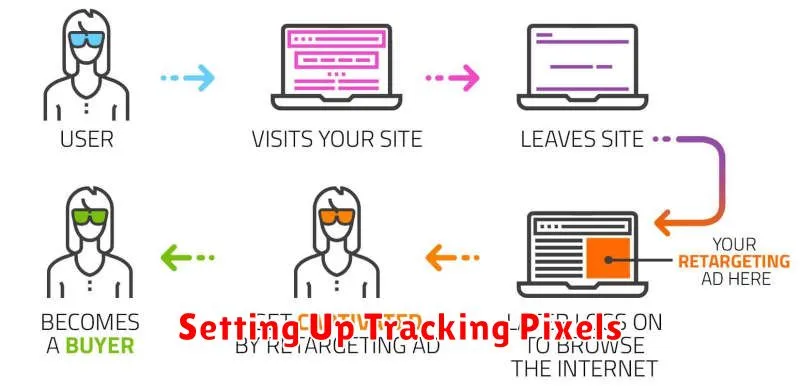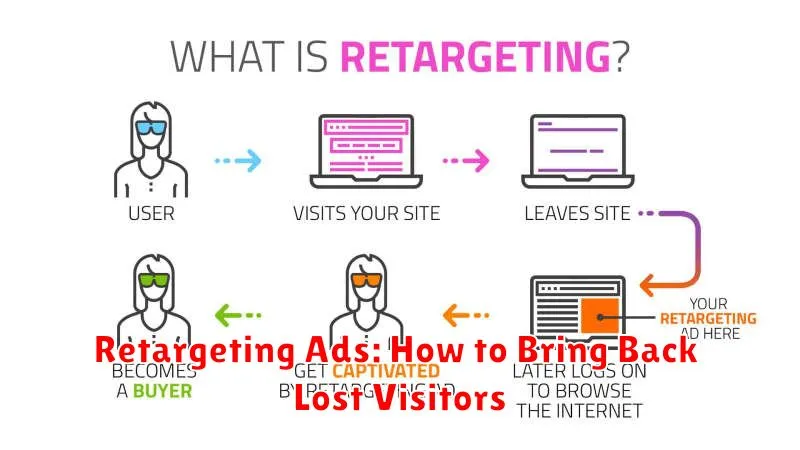Have you ever browsed a website, added items to your cart, and then left without completing the purchase? You’re not alone. A significant portion of website visitors abandon their shopping carts or leave without converting. Retargeting ads offer a powerful solution to recapture these lost visitors and bring them back to your site. By strategically displaying ads to users who have previously interacted with your website, you can effectively re-engage them and encourage them to complete a desired action, whether it’s making a purchase, signing up for a newsletter, or downloading a resource. Learning how to leverage retargeting ads is essential for maximizing your return on ad spend and boosting your overall marketing ROI.
This article explores the intricacies of retargeting ads, providing a comprehensive guide on how to effectively bring back lost visitors and convert them into paying customers. We’ll delve into the various types of retargeting campaigns, discuss best practices for creating compelling ad creatives, and offer practical tips for optimizing your retargeting strategy to achieve optimal results. Understanding the nuances of retargeting is crucial for any business looking to improve its online marketing performance and drive significant revenue growth. By the end of this article, you’ll be equipped with the knowledge and tools to effectively implement retargeting ads and reignite interest from your lost visitors.
What Is Retargeting and How It Works
Retargeting, also known as remarketing, is a powerful advertising technique that allows you to reconnect with users who have previously interacted with your website or app. It works by displaying targeted ads to these individuals as they browse other sites across the internet.
The process typically involves placing a small piece of code, called a pixel, on your website. This pixel tracks user behavior and places anonymous cookies in their browsers. When these users leave your site and visit other platforms within the advertising network, the pixel recognizes the cookie and triggers your ads to be shown, reminding them of their previous interest.
Setting Up Tracking Pixels

Tracking pixels are essential for retargeting. They are small, invisible code snippets placed on your website. These pixels allow you to track website visitors and their behavior. This data is then used to serve targeted ads to these visitors after they leave your site.
Placement of the pixel is crucial. Typically, it’s added to the header or footer of your website, ensuring it’s present on every page. Each retargeting platform provides specific instructions for generating and implementing their pixel. Ensure you follow these instructions carefully for proper tracking.
Segmenting Audiences for Accuracy
Accurate retargeting relies on precise audience segmentation. Instead of targeting all past visitors, divide them into meaningful segments based on their behavior on your website.
Consider segmenting by pages visited, products viewed, time spent on site, or shopping cart abandonment. This allows you to tailor your retargeting ads, delivering highly relevant messages to each segment. For example, someone who abandoned their cart might receive a discount code, while someone who browsed a specific product category might see ads featuring similar items.
Ad Creatives That Capture Attention
Retargeting ads rely heavily on compelling creatives to recapture lost visitors. Visual appeal is crucial. Use high-quality images or videos that are relevant to the products or services viewed. Clarity is key; ensure the ad’s message is easily understood at a glance.
Personalization can significantly improve click-through rates. Dynamically insert products viewed or related items directly into the ad. Also, consider using strong calls to action that encourage immediate engagement, such as “Shop Now” or “Learn More.”
Frequency Capping and Timing
Frequency capping prevents ad fatigue by limiting the number of times a specific ad is shown to a single user within a given timeframe. This avoids overwhelming potential customers and maintains a positive brand experience.
Timing your retargeting ads strategically is crucial. Consider the typical buying cycle for your product or service. Displaying ads too soon after a website visit might be ineffective, while waiting too long could result in losing the customer’s interest.
Using Dynamic Retargeting for Products
Dynamic retargeting takes product retargeting a step further. Instead of showing generic ads, dynamic retargeting displays ads featuring the specific products a visitor viewed or added to their cart. This personalized approach significantly increases the chances of a conversion.
Imagine a customer browses several pairs of shoes on your website and then leaves. With dynamic retargeting, they’ll see ads showcasing those exact shoes as they browse other sites, serving as a powerful reminder and enticing them to return and complete their purchase.
Best Platforms for Retargeting Campaigns
Several platforms excel in facilitating effective retargeting campaigns. Google Ads offers extensive reach across its search and display network, allowing for precise targeting based on user behavior. Facebook/Instagram Ads leverages detailed user profiles and social engagement for highly personalized retargeting. LinkedIn Ads focuses on professional audiences, making it ideal for B2B retargeting efforts. Choosing the right platform depends on your target audience and campaign goals.
A/B Testing for Better Results
A/B testing is crucial for optimizing retargeting campaigns. It allows you to compare two versions of an ad, landing page, or other element to determine which performs better.
Test key elements such as ad copy, visuals, call-to-actions, and even the offer itself. By analyzing the results, you can identify what resonates most effectively with your target audience and refine your campaigns for improved performance.
Privacy Considerations and GDPR
Retargeting involves collecting user data, raising privacy concerns. Adherence to regulations like the General Data Protection Regulation (GDPR) is crucial.
Obtain explicit consent before collecting and utilizing data for retargeting. Provide users with clear information about data collection practices and offer opt-out mechanisms.
Transparency and user control are paramount for ethical and legal retargeting campaigns.
Optimizing Retargeting for Conversions
Retargeting optimization is crucial for maximizing your return on ad spend (ROAS). It goes beyond simply showing ads to past visitors.
Focus on segmentation. Divide your audience based on their behavior on your website. For example, create segments for users who added items to their cart but didn’t purchase, viewed specific product categories, or spent a certain amount of time on your site.
Tailor your ad creatives and messaging to each segment. Offer personalized recommendations or incentives like discounts to entice conversions.
Continuously monitor and analyze your campaign performance. Adjust bids, targeting, and creatives based on what’s working and what’s not.

